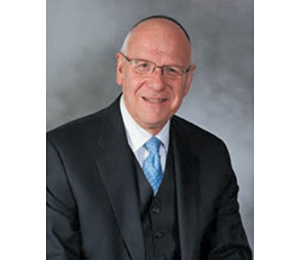
Parashat Emor that we read this week dedicates its first perek to the laws of kedusha as they apply to the kohanim. The obligation of the kohanim to retain a state of tahara, purity, when serving in the Mikdash, their prohibition to have contact with the dead and the women they are permitted to marry are all included in the first chapter. It is therefore only logical that our haftorah reflect that same theme, which is why Chazal established that the 44th perek of Yechezkel be read on this Shabbat. And, although some of the laws that the Navi teaches contain certain stringencies not found in the parsha itself, we accept that because, as the Radak explains, kohanim of the Third Temple would take upon themselves additional rigors and an elevated level of sanctity, reflecting the greater kedusha of the never-to-be-destroyed Beit HaMikdash.
As we have pointed out in the past, the final chapters of Sefer Yechezkel discuss the “Avoda,” the sacrificial rites that would be observed in the future Beit HaMikdash. HaRav Moshe Lichtenstein points out that these chapters are unique in that other prophetic writings include prophecies of consolation that describe the return of Israel to their land, the rebuilding of destroyed cities, the replanting of lost vineyards and the repopulating of deserted villages. But these final prakim are, in effect, the chapters of consolation of Sefer Yechezkel. In them, Yechezkel adds to the glorious picture of redemption portrayed by Yeshayahu and Yirmiyahu by reminding us that the return of the Temple service would also be part of the geula. After all, it is this navi who often speaks of Hashem’s presence, His shechina, leaving Yerushalayim and, therefore, it was only logical to describe the return of His glory as part-if not a central part-of the redemption.
It is also essential to note that Yechezkel describes the rather mundane, day to day rituals in the Holy Temple and not those of a special day or of a unique service. One might suggest that it is precisely this very fact, the idea that sanctity would reign and holiness would abound on a daily basis, which the prophet is emphasizing. The extraordinary impact of the geula would not be seen only on “special” days and “special” occasions but would rather, become part and parcel of daily life in the Holy Land. This, indeed, is the goal of geula. An independent state of Israel, living peacefully in the Land of Israel, drawing closer to the God of Israel.
A goal we must all strive to achieve.
By Rabbi Neil N. Winkler










